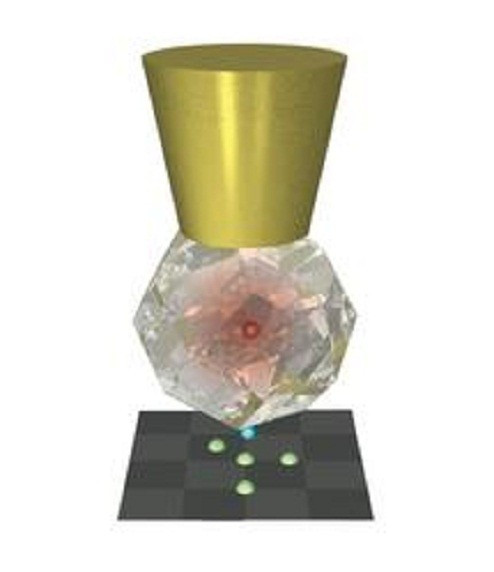Amplifier Helps Diamond Locate Atoms

An "amplifier" molecule, placed on the tip of a diamond, could help scientists locate and identify individual atoms, according to researchers at Oxford University.
The idea builds on current attempts to create a diamond nanocrystal that could be used to detect an atom's incredibly weak magnetic field. Defects within the diamond hold electrons that act rather like a compass, lining up with the weak magnetic field emanating from the core of an atom.
Crucially, this diamond compass can be read by shining a pulse of laser light into the crystal, which should then provide information about the location and type of atom. For instance, it should be able to tell the difference between a carbon and hydrogen atom, as well as pinpointing its exact location within a structure such as a virus or a new material.
"The problem with this approach is that the 'compass' only behaves well if it is buried within the diamond: this makes it very difficult to get it close enough to a structure to detect an individual atom's magnetic field," said the study's author Simon Benjamin, in a statement.
The research was published in Physical Review Letters.
"Our calculations show for the first time how such an amplifier could be used to make a diamond probe sensitive enough to pinpoint and identify individual atomic cores," Benjamin added.
The team believes it may only be a couple of years before diamond probes reveal the world of the atom in unprecedented detail. Furthermore, they also believe that the small step of adding an amplifier could lead to systems many times more powerful.
"The device that we propose may well represent the limit of what is possible in terms of magnetic field sensitivity and resolution; if, as we hope, it allows direct identification of atoms by their core signatures, then it will be a revolutionary tool in chemistry, biology and medicine," the study's co-author, Erik Gauger, added.
© Copyright IBTimes 2025. All rights reserved.





















